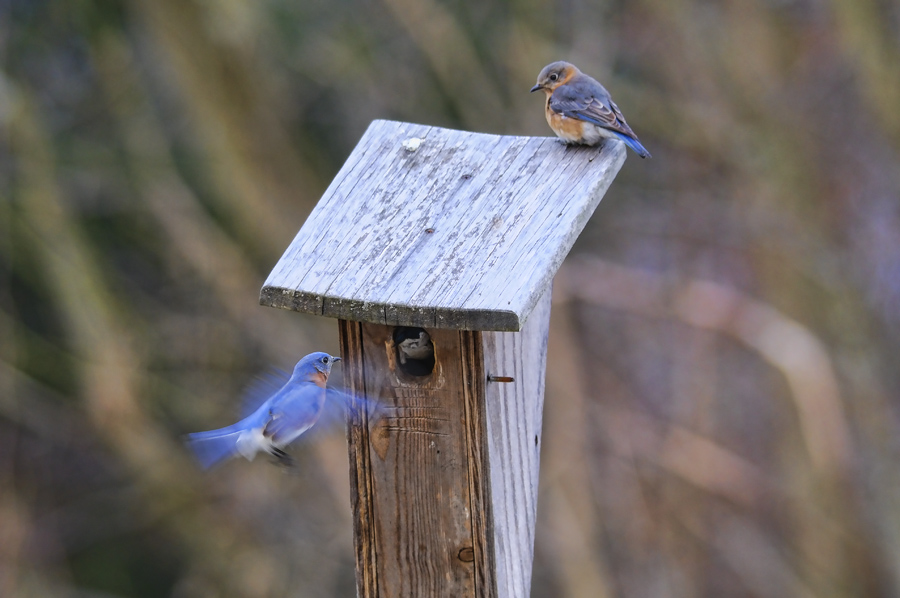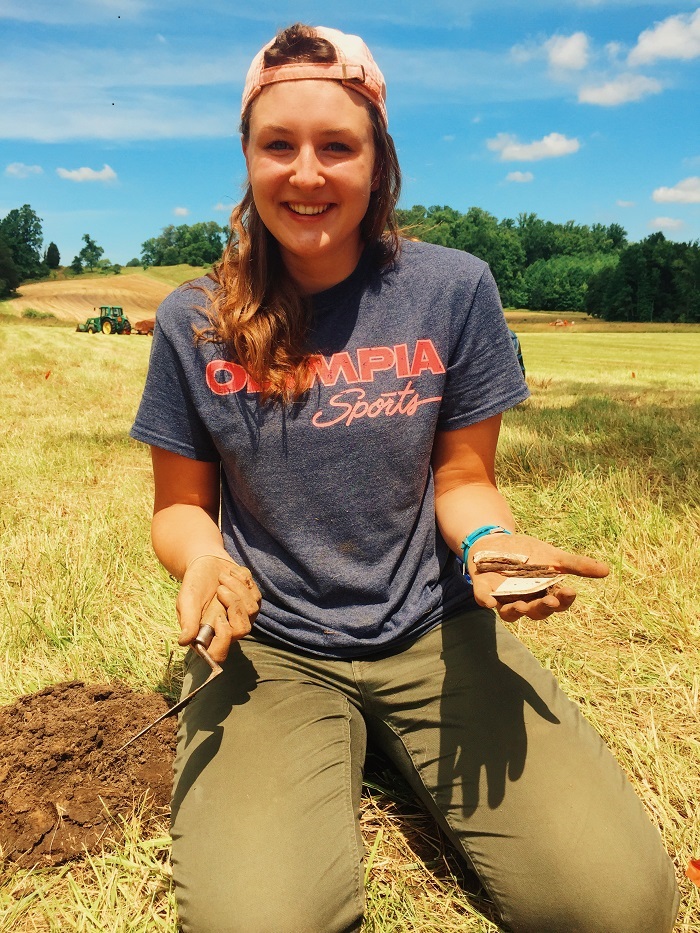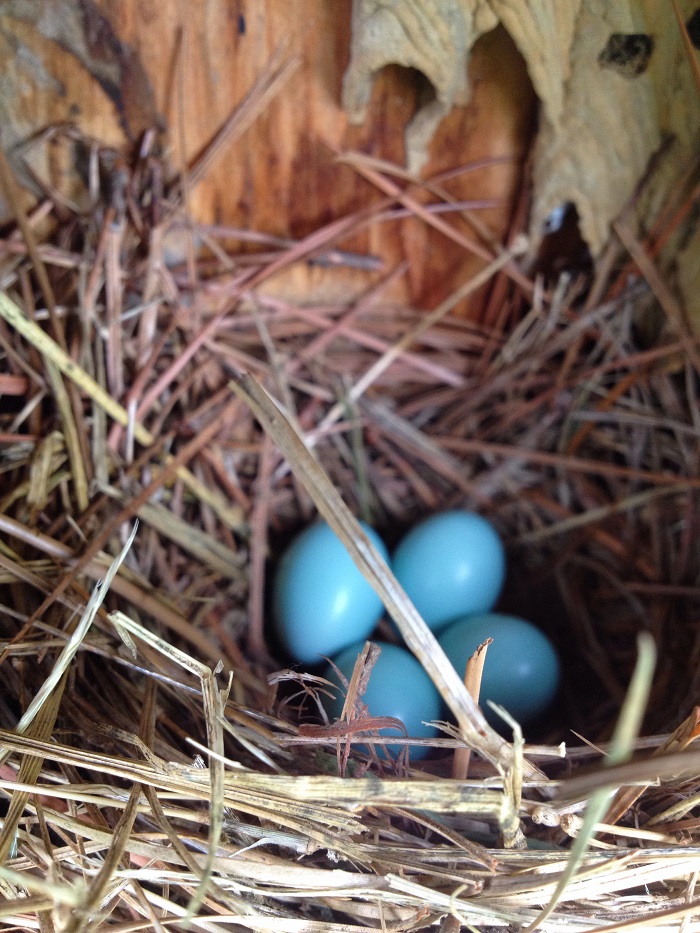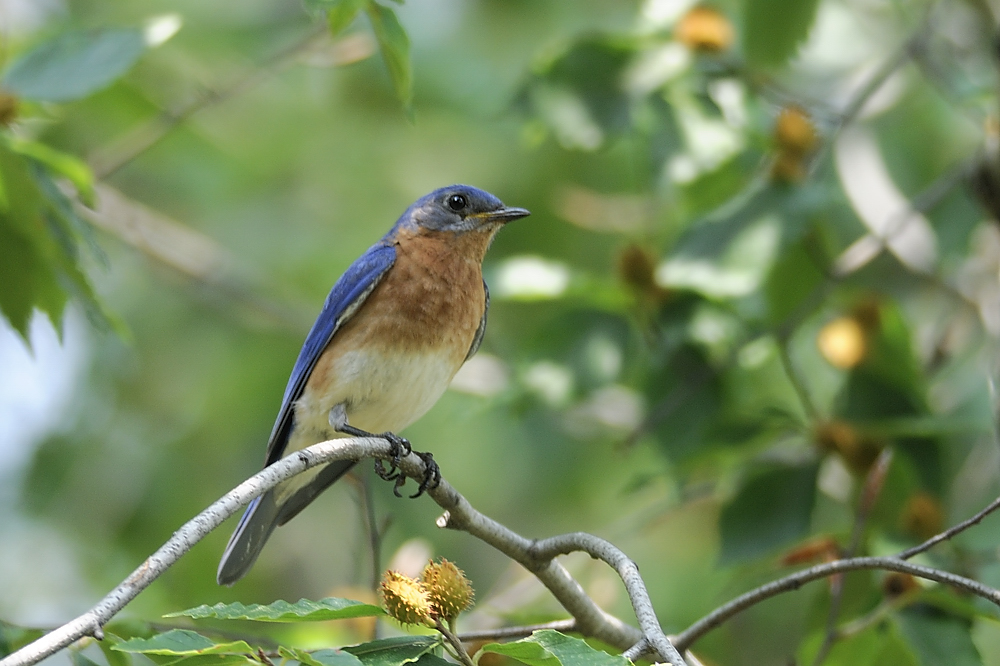by Chris Patrick
Eastern bluebirds resemble flying, fist-sized jewels. Males are sapphire colored—royal-blue heads, backs, and wings contrast with rust-colored chests. Females are more gray than blue, but their wings are subtly tinted the same sapphire hue.
Since 2008, citizen scientists have monitored bluebirds at the Smithsonian Environmental Research Center (SERC). The Bluebird Project is citizen science intern Caroline Kanaskie’s self-proclaimed “baby” this summer. She is uncovering why bluebird numbers at SERC have been lower than usual.
Bluebirds nest in pre-existing cavities, like those made and abandoned by woodpeckers in trees or telephone poles. In the 1970s, after urbanization decreased the number of trees with cavities available to bluebirds, there was a big push to construct bluebird nest boxes. SERC put up 48 wooden nest boxes on campus in the early 2000s, ranging from a corner of the butterfly garden (the most popular bluebird nest site) to the Reed Education Center and fields surround the Contee Mansion Ruins.
Three devoted citizen scientists check the boxes weekly from March to September. Bluebirds are the focus species, but they monitor chickadees and tree swallows in the boxes as well.
To gather data on the boxes’ avian occupants, citizen scientists first knock on the side to let any adults leave without startling them. They then take out a nail to open the box and peer inside. They record if there’s a nest and, if so, what kind. A nest’s material can tell what type of bird made it—bluebirds use dried grasses, whereas chickadees use green vegetation, like moss. The citizen scientists track how many eggs are laid and how many hatch as the season progresses.
Bluebirds are classified as a species of least concern by the International Union for Conservation of Nature, but recently SERC’s nest boxes have seen fewer bluebird eggs and hatchlings. Kanaskie wants to know why. Though citizen scientists diligently collected data for seven years, nothing has been done with it until now. Kanaskie has spent much of her internship analyzing the data to see if she can explain the bluebirds’ recent drop.
With 222 eggs laid, 2012 was the best year for bluebirds since data collection began. In 2013, the number of bluebird eggs laid fell just below that, to 220. But in 2014, the number of eggs laid plummeted, with only 170 in all 48 boxes.
To explain this drop, the strongest relationship she’s found so far is between the number of bluebird eggs and the number of days with average temperatures below freezing, based on data from SERC’s meteorological tower. It’s an inverse relationship—the more days below freezing, the less eggs laid, especially when there are many consecutive days below freezing.
While there were only seven days below freezing in 2012’s winter, when bluebird eggs were at an all-time high, there were 15 days below freezing the next year and a whopping 48 days the next. This dramatic increase may explain the plummet in the number of eggs laid.
It could be that below-freezing days affect bluebirds’ food. They mainly eat insects and berries—mostly berries in the winter. “If the berries are frozen, they can’t get to them,” Kanaskie said. “That’s kind of the end.”
Kanaskie hasn’t seen the data from 2015 yet, but noted that this past winter had 47 days below freezing. “With that kind of winter, I would expect our bluebird numbers to be pretty low,” Kanaskie said.
In addition to the bluebird project, Kanaskie helps out on other SERC citizen science projects, including the archaeology digs and Parasite Project. She is also prepping markers for the Contee Watershed Trail that correspond to an educational brochure made by a previous intern, Sarah Hansen, and teaches students at Walker Mill Middle School in Washington, D.C., with Alison Cawood, her advisor and SERC’s citizen science coordinator.
Kanaskie, a rising junior and environmental science major at Dickinson College, became interested in citizen science when she started volunteering at a Dickinson organization known as Alliance for Aquatic Resource Monitoring (ALLARM). Kanaskie has worked with ALLARM since her freshman year, teaching communities how to investigate the health of their waterways.
“It’s definitely made me realize how important it is to communicate science,” Kanaskie said. “I feel like sometimes there is a disconnect between scientists and the public. Citizen science lets people get involved or bridges that gap between researcher and citizen.”
Acting as that bridge between science and the public, Kanaskie has adopted the bluebird citizen scientists’ same devotion to the project. Besides analyzing the data, she wants to expand and publicize the project. While here, she’d like to develop an outreach program for people to come and learn about birds.
But she recognizes that this project is not hers. “I’ll only be here for two more months, but [the citizen scientists] will be here for a really long time. I want it to go in the direction they want.”





